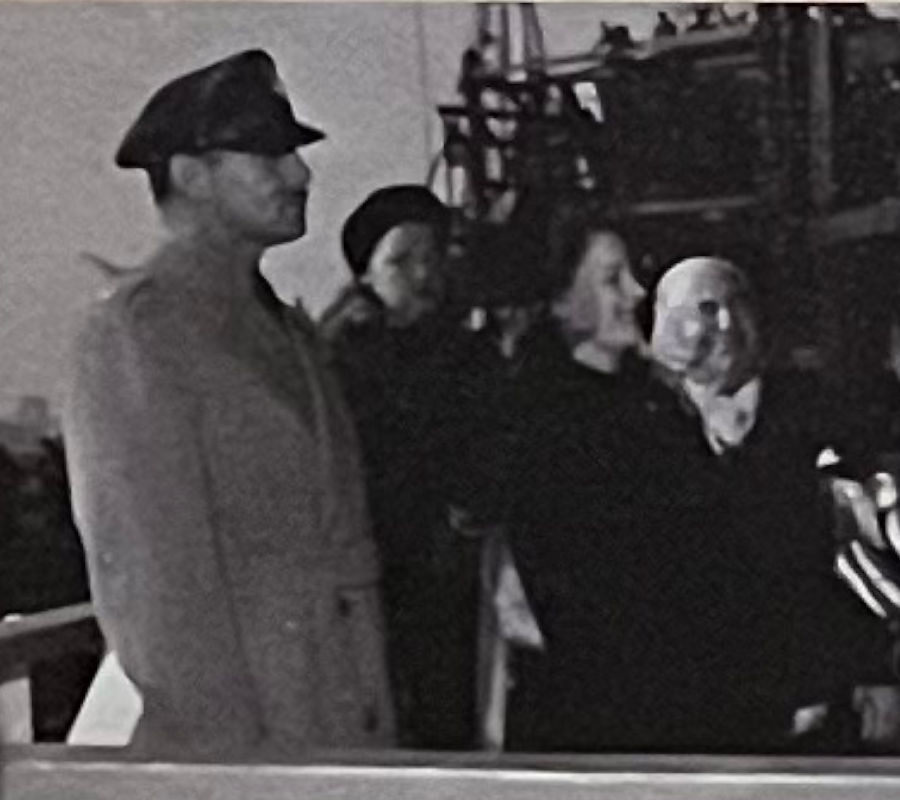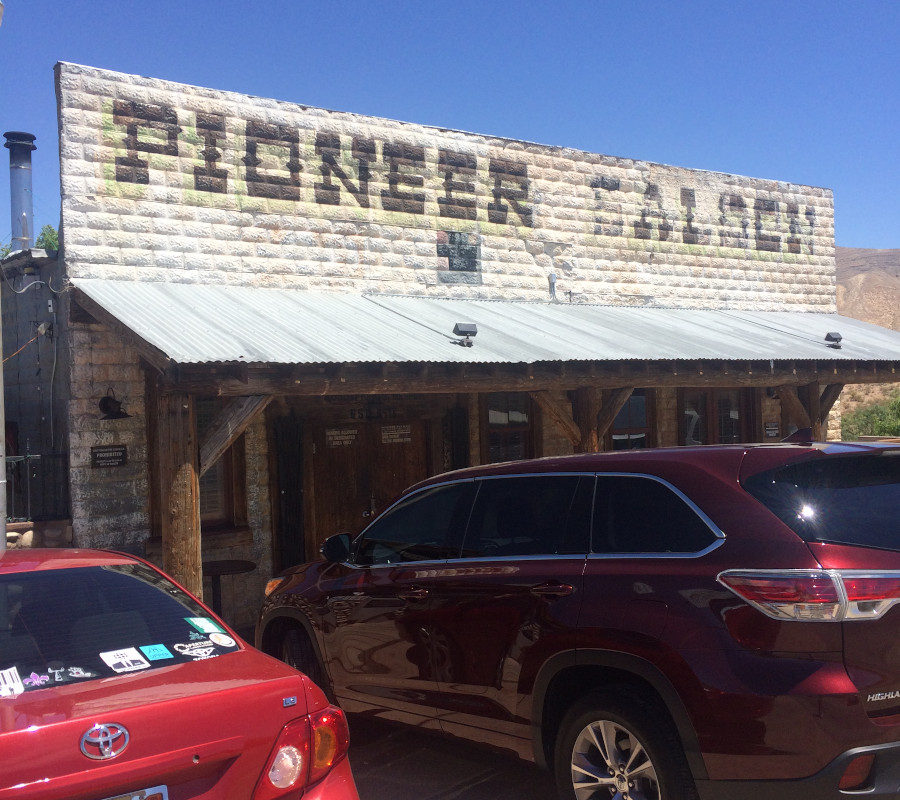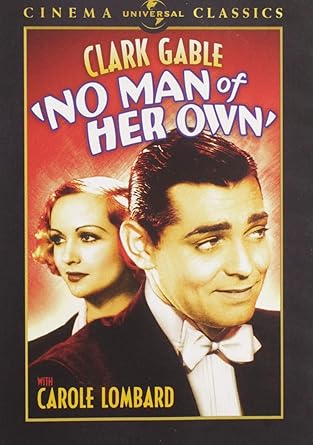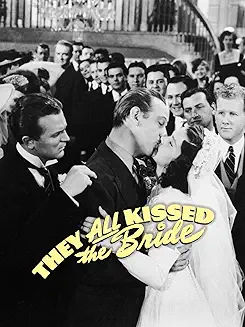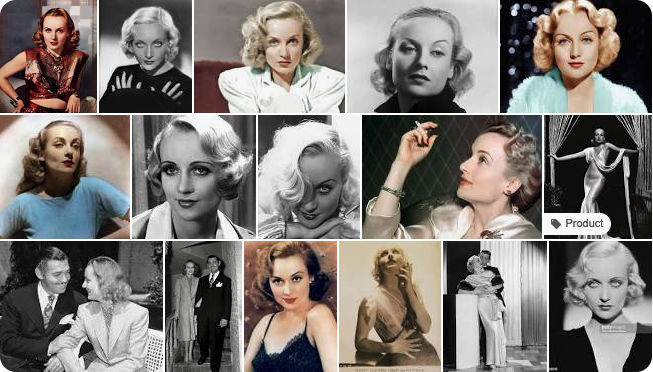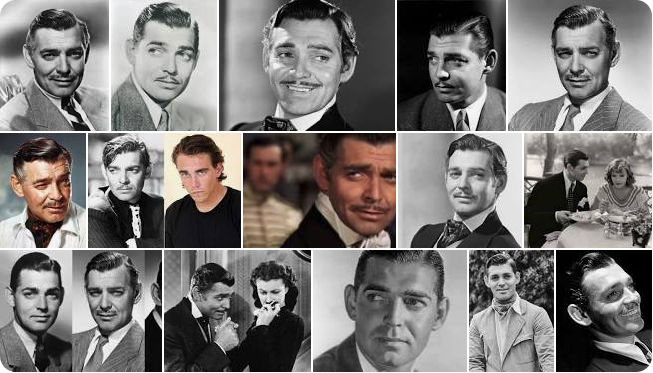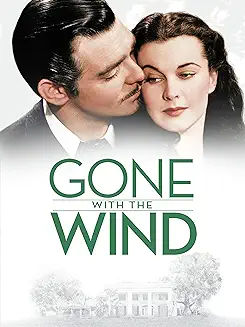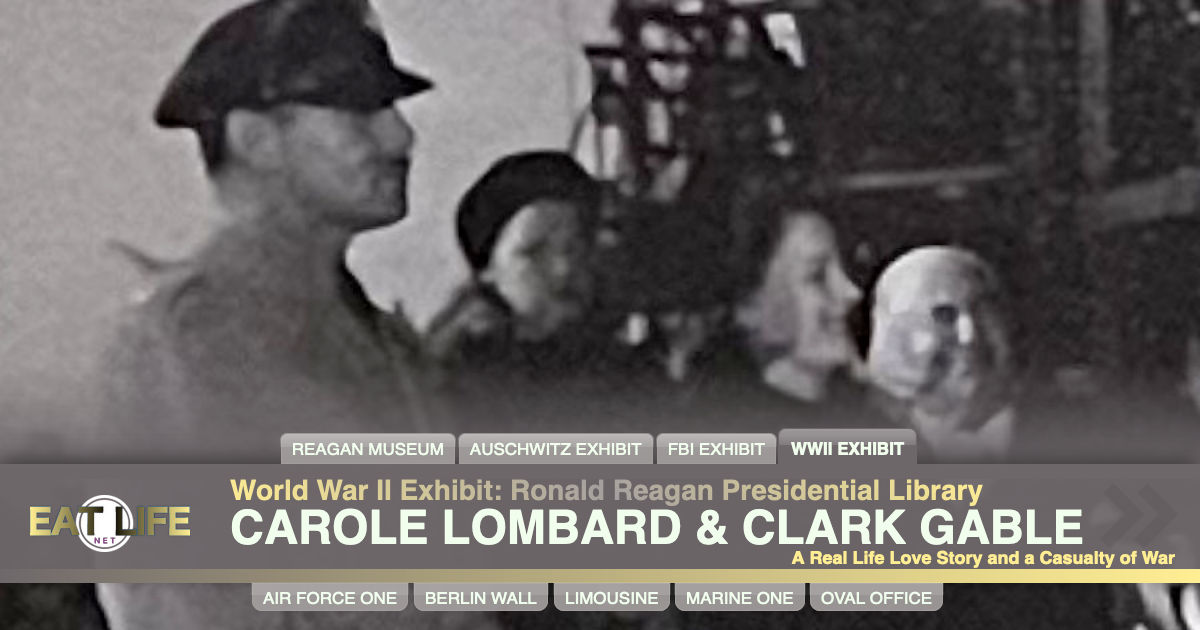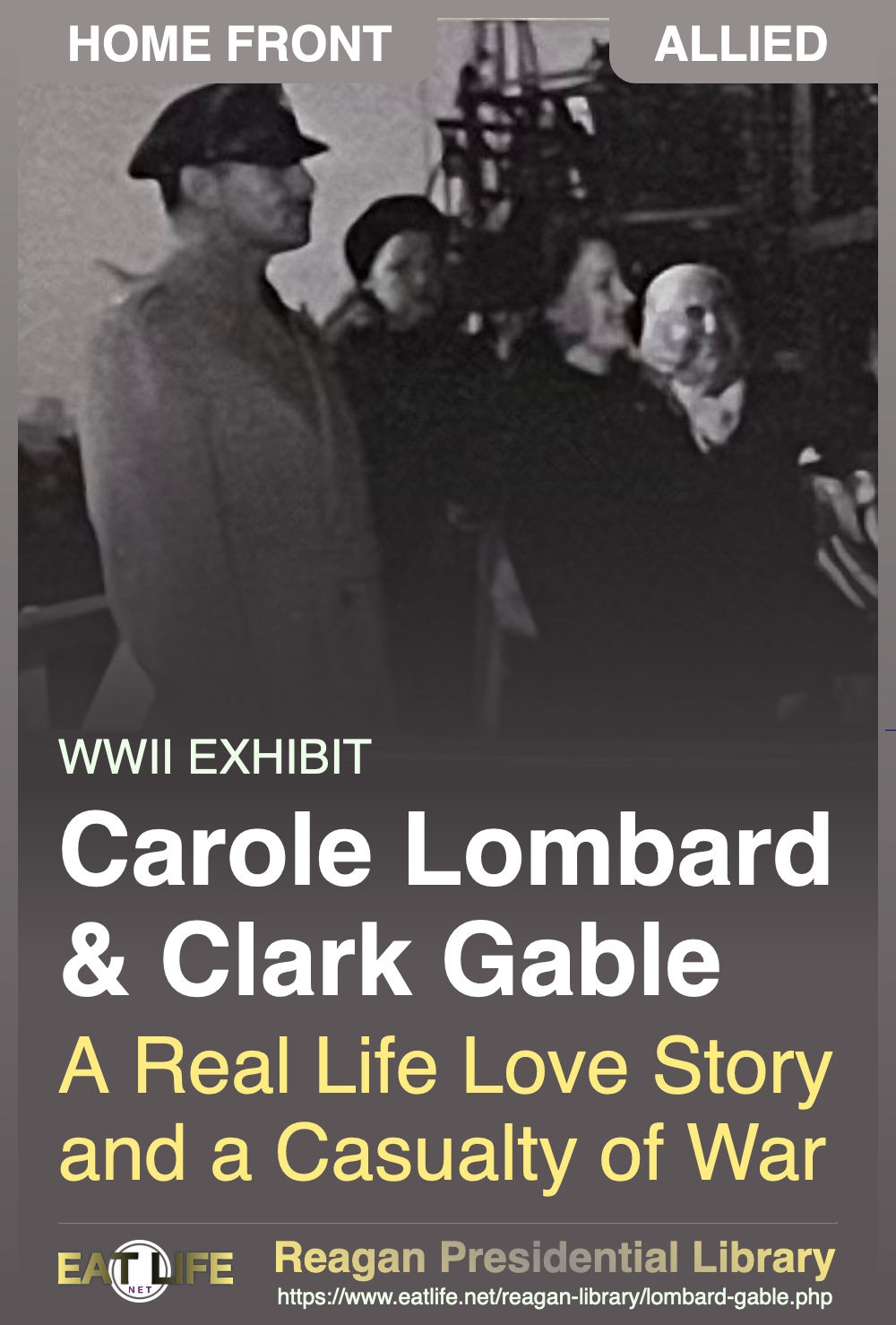The two Hollywood movie stars got married right as the US entered WWII. Lombard was one of the actresses that promoted war bonds. On January 15, 1942, Lombard attended a war bond rally in her home state of Indiana. She had a record-breaking war bond drive raising more than $2 million in a single evening. Her flight home landed in Las Vegas to refuel, took off again, then crashed into a mountain only 32 miles from Las Vegas. All twenty-two on board were killed instantly. Lombard was only 33 years old.
Because of the possibility of Japanese aircraft entering American airspace on bombing missions, safety beacons normally used at night had been turned off and made the mountains nearly impossible for the pilot and crew to see. Inconsolable after Lombard's death, Gable enlisted in the United States Army Air Forces. In December 1943, the United States Maritime Commission announced that a Liberty Ship would be named after Lombard. Gable attended the launch of the SS Carole Lombard.
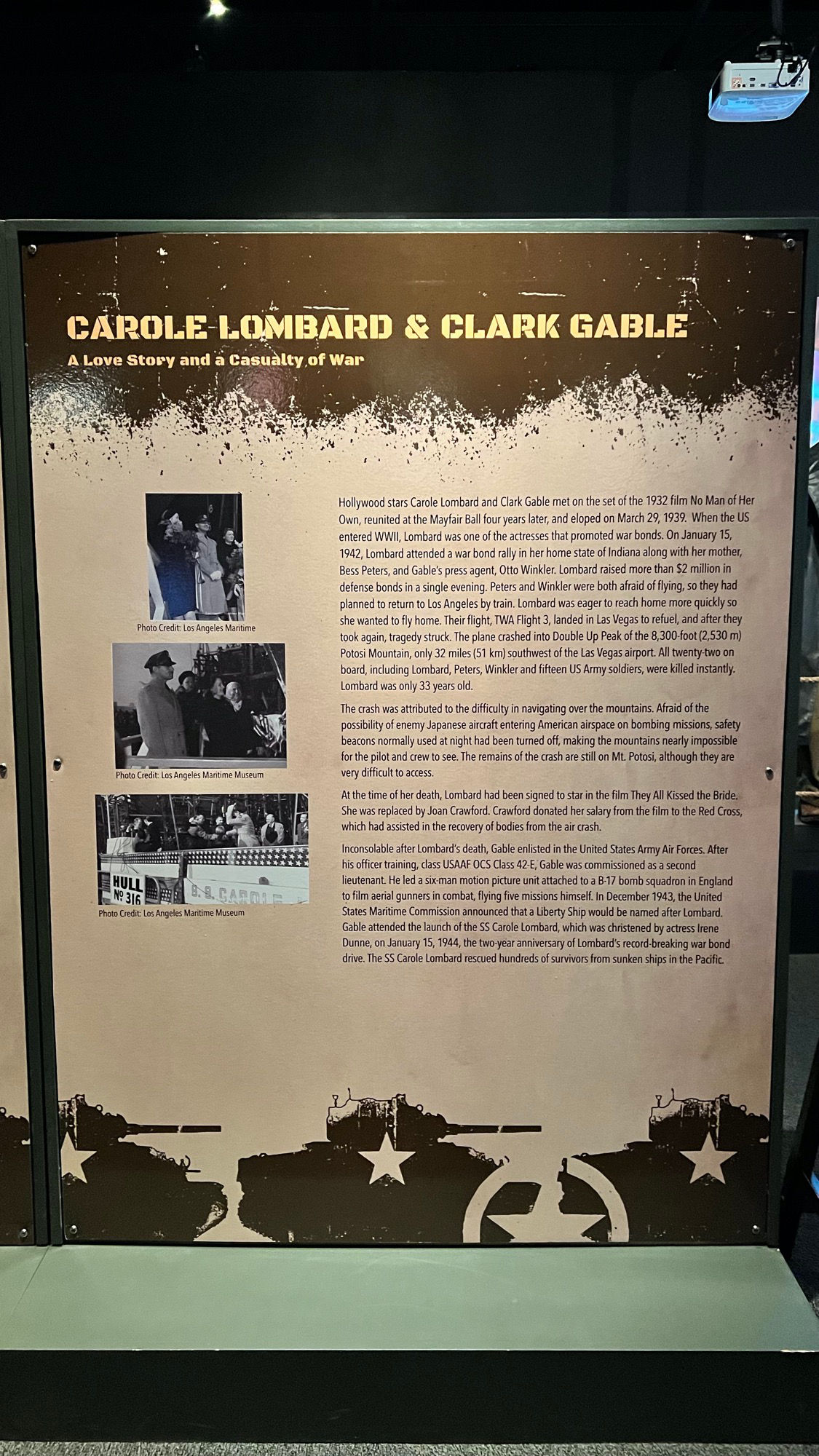
A Love Story and a Casualty of War
Hollywood stars Carole Lombard and Clark Gable met on the set of the 1932 film No Man of Her Own, reunited at the Mayfair Ball four years later, and eloped on March 29, 1939.
When the US entered WWII, Lombard was one of the actresses that promoted war bonds. On January 15, 1942, Lombard attended a war bond rally in her home state of Indiana along with her mother, Bess Peters, and Gable's press agent, Otto Winkler. Lombard raised more than $2 million in defense bonds in a single evening. Peters and Winkler were both afraid of flying, so they had planned to return to Los Angeles by train. Lombard was eager to reach home more quickly so she wanted to fly home.
Their flight, TWA Flight 3, landed in Las Vegas to refuel, and after they took off again, tragedy struck. The plane crashed into Double Up Peak of the 8,300-foot (2,530 m) Potosi Mountain, only 32 miles (51 km) southwest of the Las Vegas airport. All twenty-two on board, including Lombard, Peters, Winkler and fifteen US Army soldiers, were killed instantly. Lombard was only 33 years old.
The crash was attributed to the difficulty in navigating over the mountains. Afraid of the possibility of enemy Japanese aircraft entering American airspace on bombing missions, safety beacons normally used at night had been turned off, making the mountains nearly impossible for the pilot and crew to see. The remains of the crash are still on Mt. Potosi, although they are very difficult to access.
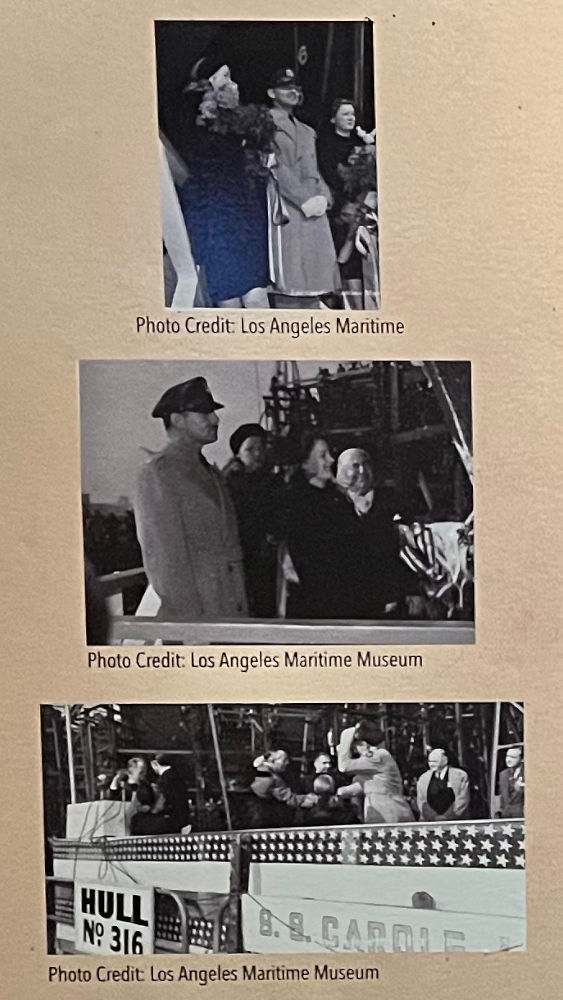 At the time of her death, Lombard had been signed to star in the film They All Kissed the Bride.
She was replaced by Joan Crawford. Crawford donated her salary from the film to the Red Cross, which had assisted in the recovery of bodies from the air crash.
At the time of her death, Lombard had been signed to star in the film They All Kissed the Bride.
She was replaced by Joan Crawford. Crawford donated her salary from the film to the Red Cross, which had assisted in the recovery of bodies from the air crash.
Inconsolable after Lombard's death, Gable enlisted in the United States Army Air Forces. After his officer training, class USAAF OCS Class 42-E, Gable was commissioned as a second lieutenant. He led a six-man motion picture unit attached to a B-17 bomb squadron in England to film aerial gunners in combat, flying five missions himself. In December 1943, the United States Maritime Commission announced that a Liberty Ship would be named after Lombard. Gable attended the launch of the SS Carole Lombard, which was christened by actress Irene Dunne, on January 15, 1944, the two-year anniversary of Lombard's record-breaking war bond drive. The SS Carole Lombard rescued hundreds of survivors from sunken ships in the Pacific.
History.comJanuary 16, 1942
The actress Carole Lombard, famous for her roles in such screwball comedies as My Man Godfrey and To Be or Not to Be, and for her marriage to the actor Clark Gable, is killed when the TWA DC-3 plane she is traveling in crashes en route from Las Vegas to Los Angeles. She was 33.Gable and Lombard met in 1932 during the filming of No Man of Her Own. He was just starting out on his trajectory as one of Hollywood's top leading men and she was a talented comedic actress trying to prove herself in more serious roles. Both were married at the time–Gable to a wealthy Texas widow 10 years his senior and Lombard to the actor William Powell–and neither showed much interest in the other. When they met again, three years later, Lombard had divorced Powell and Gable was separated from his wife, and things proceeded quite differently. Much to the media's delight, the new couple was open with their affection, calling each other Ma and Pa and exchanging quirky, expensive gifts. In early 1939, Gable's wife finally granted him a divorce, and he married Lombard that April.
In January 1942, shortly after America's entrance into World War II, Howard Dietz, the publicity director of the MGM film studio, recruited Lombard for a tour to sell war bonds in her home state of Indiana. Gable, who had been asked to serve as the head of the actors' branch of the wartime Hollywood Victory Committee, stayed in Los Angeles, where he was set to begin filming Somewhere I'll Find You with Lana Turner. Dietz advised Lombard to avoid airplane travel, because he feared for its reliability and safety, and she did most of the trip by train, stopping at various locations on the way to Indianapolis and raising some $2 million for the war effort.
On the way home, however, Lombard didn't want to wait for the train, and instead boarded the TWA DC-3 in Las Vegas with her mother, Elizabeth Peters, and a group that included the MGM publicity agent Otto Winkler and 15 young Army pilots. Shortly after takeoff, the plane veered off course. Warning beacons that might have helped guide the pilot had been blacked out because of fears about Japanese bombers, and the plane smashed into a cliff near the top of Potosi Mountain. Search parties were able to retrieve Lombard's body, and she was buried next to her mother at Forest Lawn Cemetery in Glendale, California, under a marker that read "Carole Lombard Gable."
Hysterical with grief and adrift in the empty house he had shared with Lombard, Gable drank heavily and struggled to complete his work on Somewhere I'll Find You. He was comforted by worried friends, including the actress Joan Crawford. That August, Gable decided to enlist in the U.S. Army Air Forces. He spent most of the war in the United Kingdom, and flew several combat missions (including one to Germany), earning several decorations for his efforts. He would remarry twice more, but when he died in 1960 Gable was interred at Forest Lawn, next to Lombard.
WIKIPEDIABorn Jane Alice Peters
October 6, 1908 – January 16, 1942
She was an American actress. Born into a wealthy family, Lombard was raised by her single mother. She made her screen debut in A Perfect Crime (1921) at the age of 12 and the experience spurred her and her mother to seek further film work, eventually resulting in a stellar movie career.Lombard was killed in a plane crash aboard TWA Flight 3 while returning from a war bond tour. She was 33 years old. Today, she is remembered as one of the definitive actresses of the screwball comedy genre and American comedy and as an icon of American cinema.
In 1999, the American Film Institute ranked Lombard 23rd on its list of the greatest female stars of Classic Hollywood Cinema.
When the U.S. entered World War II, Lombard traveled to her home state of Indiana for a war bond rally with her mother and Clark Gable's press agent, Otto Winkler. Lombard raised more than $2 million in defense bonds in a single evening. Her party had initially been scheduled to return to Los Angeles by train, but Lombard was eager to reach home more quickly and wanted to travel by air. Her mother and Winkler were afraid of flying and insisted that the group follow their original travel plans. Lombard suggested that they flip a coin; they agreed, and Lombard won the toss.
In the early morning hours of January 16, 1942, Lombard, her mother and Winkler boarded a Transcontinental and Western Air Douglas DST (Douglas Sleeper Transport) aircraft to return to California. After refueling in Las Vegas, TWA Flight 3 took off at 7:07 p.m. and crashed into Double Up Peak near the 8,300-foot level of Potosi Mountain, 32 statute miles southwest of the Las Vegas airport. All 22 aboard, including Lombard, her mother, Winkler and 15 U.S. Army soldiers, were killed instantly. Lombard was 33 years old. The crash's cause was attributed to the flight crew's inability to properly navigate over the mountains surrounding Las Vegas. As a precaution against the possibility of enemy Japanese bomber aircraft coming into American airspace from the Pacific, safety beacons normally used to direct night flights had been turned off, leaving the pilot and crew of the TWA flight without visual warnings of the mountains in their flight path.
WIKIPEDIAWilliam Clark Gable
February 1, 1901 – November 16, 1960
He was an American film actor. Often referred to as The King of Hollywood, he had roles in more than 60 motion pictures in a variety of genres during a career that lasted 37 years, three decades of which was as a leading man. He was named the seventh greatest male movie star of classic American cinema by the American Film Institute.
- Gable won the Academy Award for Best Actor for his role in the romantic comedy It Happened One Night (1934)
- He was further Oscar-nominated for his roles as Fletcher Christian in the drama Mutiny on the Bounty (1935), and Rhett Butler in the historical romance drama Gone with the Wind (1939)
- He received Golden Globe Award nominations for his comedic roles in Teacher's Pet (1958), and But Not for Me (1959)
- He also starred in Call of the Wild (1935), Key to the City (1950), and Mogambo (1953)
- His final on-screen role was as an aging cowboy in The Misfits (1961)
Gable was one of the most consistent box-office performers in the history of Hollywood, appearing on Quigley Publishing's annual Top Ten Money Making Stars Poll sixteen times. He appeared opposite many of the most popular actresses of their time. He frequently acted alongside Joan Crawford, Myrna Loy, Jean Harlow, Lana Turner, Norma Shearer and Ava Gardner. Gable died of a heart attack at the age of 59.
With the bombing of Pearl Harbor many Hollywood stars joined the war effort, some such as James Stewart signing up for active duty. Carole Lombard sent a telegram to President Roosevelt on behalf of Gable expressing his interest in doing so, but F.D.R. thought the 41-year-old actor could best serve by increased patriotic roles in movies and bond drives, which Lombard tirelessly began.
On January 16, 1942, Lombard was a passenger on Transcontinental and Western Air Flight 3 with her mother and press agent Otto Winkler. She had just finished her 57th movie, To Be or Not to Be, and was on her way home from a successful war bond selling tour when the flight's DC-3 airliner crashed into Potosi Mountain near Las Vegas, Nevada, killing all 22 passengers aboard, including 15 servicemen en route to training in California. Gable flew to the crash site to claim the bodies of his wife, mother-in-law, and Winkler, who had been the best man at Gable and Lombard's wedding. Lombard was declared to be the first war-related American female casualty of World War II, and Gable received a personal note of condolence from President Roosevelt. The Civil Aeronautics Board investigation into the crash concluded that pilot error was its cause.
Gable returned to their Encino ranch and carried out her funeral wishes as she had requested in her will. A month later, he returned to the studio to work with Lana Turner in their second movie together, Somewhere I'll Find You. Having lost 20 pounds since the tragedy, Gable evidently was emotionally and physically devastated, but Turner stated that Gable remained a "consummate professional" for the duration of filming. He acted in 27 more films, and remarried twice more. "But he was never the same", according to Esther Williams. "He had been devastated by Carole's death."
On August 12, 1942, following Lombard's death and completion of the film Somewhere I'll Find You, Gable joined the United States Army, under the Army Air Forces. Lombard had suggested that Gable enlist as part of the war effort, but MGM was reluctant to let him go. Commanding General of the U.S. Army Air Forces Henry H. "Hap" Arnold offered Gable a "special assignment" with the First Motion Picture Unit following basic training. The Washington Star reported that Gable took a physical examination at Bolling Field on June 19, preliminary to joining the service.
Gable had expressed an earlier interest in officer candidate school, with the intention of becoming an aerial gunner upon enlisting in bomber training school. MGM arranged for his studio friend, the cinematographer Andrew McIntyre, to enlist with him and accompany him through training.
On August 17, 1942, shortly after his enlistment, he and McIntyre were sent to Miami Beach, Florida, where they entered USAAF OCS Class 42-E. Both completed training on October 28, 1942, and were commissioned as second lieutenants. His class of about 2,600 students (of which he ranked about 700th) selected Gable as its graduation speaker. General Arnold presented the cadets with their commissions. Arnold then informed Gable of his special assignment: to make a recruiting film in combat with the Eighth Air Force to recruit aerial gunners. Gable and McIntyre were immediately sent to Flexible Gunnery School at Tyndall Field, Florida, followed by a photography course at Fort George Wright, Washington State and promoted to first lieutenants upon its completion.
On January 27, 1943, Gable reported to Biggs Army Airfield, Texas to train with and accompany the 351st Bomb Group to England as head of a six-man motion picture unit. In addition to McIntyre, he recruited the screenwriter John Lee Mahin, camera operators Sgts. Mario Toti and Robert Boles, and the sound man Lt. Howard Voss, to complete his crew. Gable was promoted to captain while he was with the 351st Bomb Group at Pueblo Army Air Base, Colorado, a rank commensurate with his position as a unit commander. (Prior to this, he and McIntyre were both first lieutenants.)
Gable spent most of 1943 in England at RAF Polebrook with the 351st Bomb Group. Gable flew five combat missions, including one to Germany, as an observer-gunner in B-17 Flying Fortresses between May 4 and September 23, 1943, earning the Air Medal and the Distinguished Flying Cross for his efforts. During one of the missions, Gable's aircraft was damaged by flak and attacked by fighters, which knocked out one of the engines and shot up the stabilizer. In the raid on Germany, one crewman was killed and two others were wounded, and flak went through Gable's boot and narrowly missed his head. When word of this reached MGM, studio executives began to badger the Army Air Forces to reassign its most valuable screen actor to noncombat duty. Many of the men he served with, such as former Tech. Sgt. Ralph Cowley, said Gable actually unofficially joined other missions and the above five were only a fraction of the total. Adolf Hitler favored Gable above all other actors. During World War II, Hitler offered a sizable reward to anyone who could capture and bring Gable to him unscathed.
In November 1943, Gable returned to the United States to edit his film, on an old Warner's lot donated to the war effort, assigned to the 18th AAF Base Unit (Motion Picture Unit) at Culver City, California, where other stars contributed with any film equipment they had as well. In June 1944, Gable was promoted to major. While he hoped for another combat assignment, he had been placed on inactive duty and on June 12, 1944, his discharge papers were signed by Captain (later U.S. president) Ronald Reagan. Gable completed editing of the film Combat America in September 1944, giving the narration himself and making use of numerous interviews with enlisted gunners as focus of the film.
Because his motion picture production schedule made it impossible for him to fulfill reserve officer duties, he resigned his commission on September 26, 1947, a week after the Air Force became an independent service branch. Gable was awarded military honors for service: the Distinguished Flying Cross, Air Medal, American Campaign Medal, European-African-Middle Eastern Campaign Medal, and World War II Victory Medal. He was a qualified aerial gunner having received his wings upon completion of flexible gunnery school at Tyndall field.
